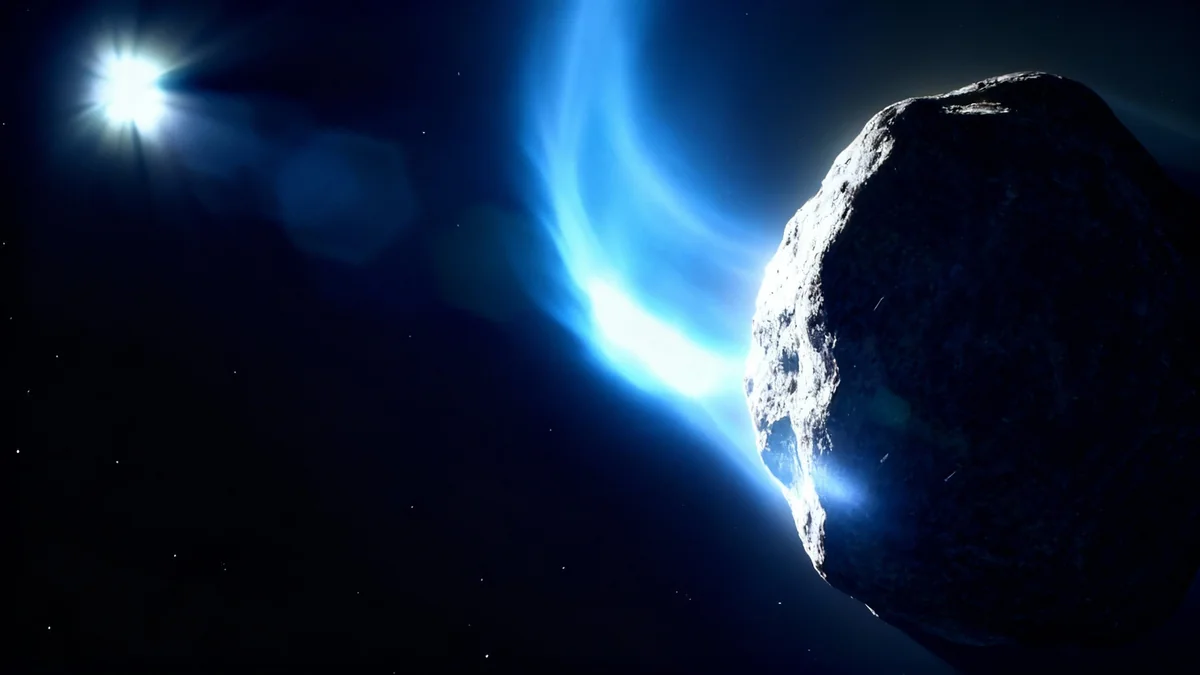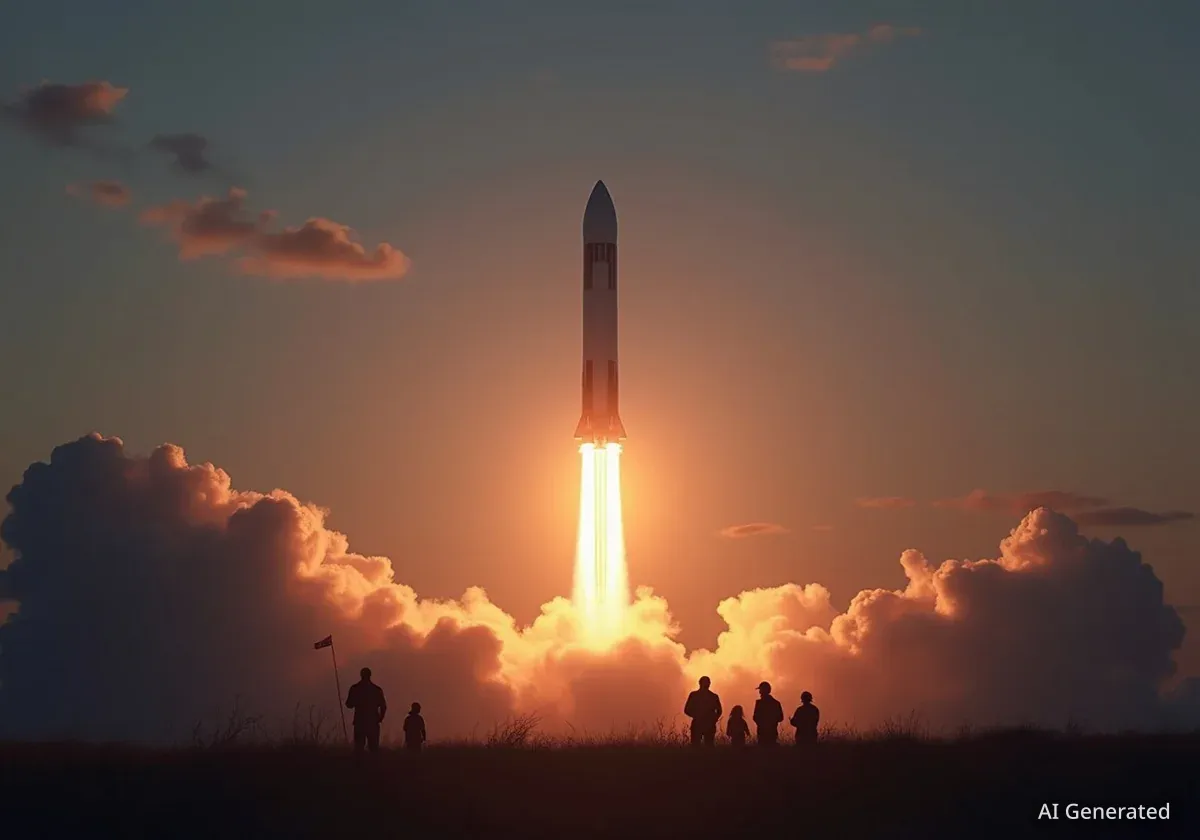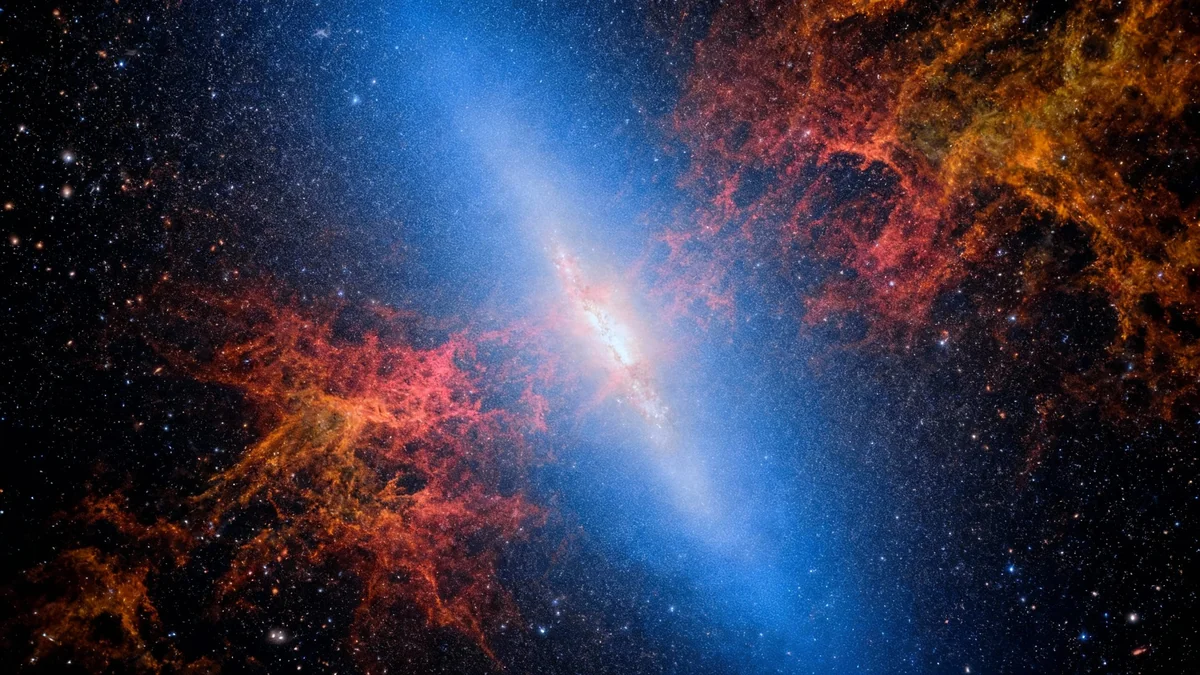Researchers from the University of Michigan have proposed a new method for detecting dangerous solar events that could disrupt Earth's power grids and navigation systems. A recent study suggests that our current single-point monitoring system can miss small, tornado-like spirals of solar wind, but a new constellation of spacecraft, including one using a solar sail, could provide a more comprehensive warning.
The proposal stems from advanced computer simulations showing how these smaller features, known as flux ropes, can pose a significant threat. The new system aims to create a multi-angle view of space weather, improving the accuracy and speed of geomagnetic storm predictions.
Key Takeaways
- A study reveals that small, tornado-like spirals of solar wind, called flux ropes, can cause significant geomagnetic storms on Earth.
- Current single-spacecraft warning systems can easily miss these dangerous, isolated features.
- Researchers propose a four-probe constellation, named SWIFT, to monitor space weather from multiple viewpoints.
- One key spacecraft in this constellation would use a large solar sail to maintain a unique orbit closer to the Sun, enabling faster warnings.
The Hidden Danger in the Solar Wind
Solar activity is a constant source of energy flowing through our solar system. This stream of charged particles is known as the solar wind. While often stable, massive eruptions from the Sun, called coronal mass ejections (CMEs), can send enormous clouds of plasma and magnetic fields toward Earth.
A new study published in the Astrophysical Journal by researchers at the University of Michigan highlights a lesser-known threat. Using high-resolution computer simulations, they found that smaller, rotating columns of plasma and magnetic fields can spin off from these larger CMEs. These features, called flux ropes, behave like tornadoes in space.
According to the research, these flux ropes can travel independently and reach Earth. If their magnetic field has a strong southward orientation, they can interact with Earth's magnetic field and trigger powerful geomagnetic storms. These storms are capable of disrupting critical infrastructure.
"Our simulation shows that the magnetic field in these vortices can be strong enough to trigger a geomagnetic storm and cause some real trouble," said Chip Manchester, a research professor of climate and space sciences and engineering at the University of Michigan and the study's corresponding author.
Impact of Geomagnetic Storms
The May 2024 geomagnetic storm demonstrated the real-world consequences of severe space weather. It was reported to have tripped high-voltage power lines, disrupted satellite orbits, and forced some aircraft to reroute. It also interfered with GPS navigation systems used by tractors, costing some farms an average of $17,000 in damages, according to NASA.
Current Monitoring Systems Have a Blind Spot
To provide warnings about incoming solar storms, scientists currently rely on spacecraft positioned at a stable point between the Sun and Earth, known as Lagrange Point 1 (L1). These probes measure the speed, density, and magnetic field orientation of the solar wind as it passes by.
However, the University of Michigan study shows this single-point system is insufficient. A large CME might be aimed away from Earth or have a harmless northward-pointing magnetic field. Yet, it could still throw off a smaller flux rope with a dangerous southward-pointing field directly toward our planet.
If this smaller tornado-like feature misses the L1 probe, we would have no warning of its approach. This creates a significant blind spot in our space weather prediction capabilities.
"Imagine if you could only monitor a hurricane remotely with the measurements from one wind gauge," Manchester explained. "You’d see a change in the measurements, but you wouldn’t see the storm’s entire structure. That’s the current situation with single-spacecraft systems. We need viewpoints from multiple space weather stations."
The Need for Proactive Detection
The researchers stress that simply watching for eruptions on the Sun is not enough. The hazardous flux ropes can form in interplanetary space, long after the initial CME has left the Sun.
"If there are hazards forming out in space between the sun and Earth, we can’t just look at the sun," said Mojtaba Akhavan-Tafti, an associate research scientist at the university and co-author of the study. He emphasized the importance of finding these structures proactively to protect national infrastructure.
What Are Flux Ropes?
Flux ropes are structures of twisted magnetic field lines containing plasma. In the solar wind, they can range from 3,000 to 6 million miles wide. The new simulation was able to model these intermediate-sized features, which are too small for typical CME models but too large for other solar wind simulations, revealing how they form and persist.
A Proposed Solution: The SWIFT Constellation
To address the limitations of the current system, the research team proposes a mission concept called the Space Weather Investigation Frontier (SWIFT). This mission would involve a constellation of four separate spacecraft working together to create a 3D picture of space weather.
The four probes would be arranged in a triangular-pyramid formation:
- Three identical probes would form the base of the pyramid, located in a plane around the L1 point, approximately 200,000 miles apart.
- A fourth "hub spacecraft" would form the apex of the pyramid, positioned beyond L1 and closer to the Sun.
This configuration would allow SWIFT to observe how the solar wind changes as it travels toward Earth. The hub spacecraft's advanced position would provide warnings up to 40% faster than current systems.
Sailing on Sunlight to a Unique Vantage Point
Maintaining an orbit beyond L1, closer to the Sun, would normally require an enormous and impractical amount of fuel to counteract the Sun's gravity. The solution proposed for the SWIFT hub spacecraft is a solar sail.
This technology was developed by NASA engineers for their Solar Cruiser mission concept. The sail, made of a thin aluminum material, would be massive—covering an area about one-third the size of a football field. It would catch photons from the Sun, using the pressure from sunlight to maintain its position without burning fuel.
This innovative approach would enable the SWIFT constellation to provide the multi-point, continuous monitoring needed to detect hazardous space tornadoes before they reach Earth, offering a new level of protection for our technology-dependent society.





